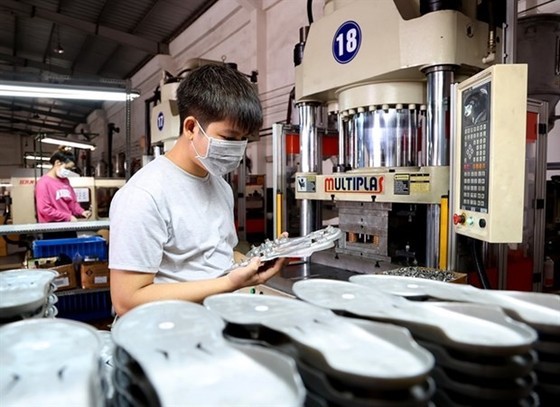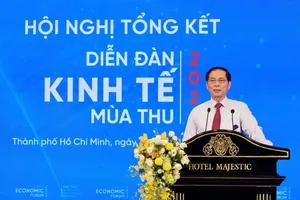 |
(Illustrative photo) |
One bright spot in January was that 153 new foreign-invested projects, valued at US$1.2 billion, were granted licenses, up 48.5 percent in number and 3.1 times in value, which was a signal to confirm the confidence of foreign investors in the investment environment of Vietnam, the FIA said.
During the month, capital added in operating projects by foreign investors saw a yearly decline of 76 percent to US$306.3 million while their capital contributions and share purchases also declined 61 percent year-on-year to over US$174 million. At the same time, disbursed capital also witnessed a decline of 16.3 percent to an estimated US$1.35 billion in the first month, the FIA said, adding that the processing and manufacturing industry saw US$1.05 billion worth of foreign investment disbursed, making up 77.6 percent of the total. Since January saw two long holidays - New Year and Lunar New Year, the decrease recorded in registered foreign investment capital, or even disbursement, had not yet reflected the general trend of foreign investment capital flows to Vietnam in 2023, according to the agency.
Projects related to wholesale, retail, and repair of automobiles and motorized vehicles accounted for the lion’s share of the total registered sum, at 54.1 percent or US$651.9 million. They were followed by those in the processing and manufacturing industry, which together registered US$351.2 million in capital or equivalent to 29.1 percent and those in other sectors at US$202 million or 16.8 percent.
Also in January, 28 foreign countries and territories invested in Vietnam. Singapore was the largest with US$767.6 million, followed by China with US$198.2 million.
Meanwhile, Vietnamese investors poured US$126.7 million into their projects overseas, increasing by 3.4 times against the same month in 2022.
Among three countries and territories receiving investment from Vietnam, the Republic of Korea was the leading country with US$125.1 million, accounting for 98.7 percent of total investment capital; followed by Thailand (US$1.5 million or 1.2 percent); and Laos (US$140,000 or 0.1 percent). Foreign investment bonanza Vietnam is expected to attract a lot of FDI this year due to its impressive economic performance in 2022, improved business climate and the advantages brought by the free trade agreements it has signed, experts said. Do Van Su, Deputy Director of the Department of Foreign Investment, said Vietnam is likely to attract US$36-38 billion worth of FDI in 2023.
The Republic of Korea, Japan and Taiwan (China) are expected to be among the main sources of investment as they continue to pump money into Southeast Asia.
Economist Le Dang Doanh said the country needs to further speed up administrative reforms, improve its investment environment and ensure policy stability.
Minister of Planning and Investment Nguyen Chi Dung said priority would be given to projects that use new and green technologies and have high added value.
Though there are admittedly still problems related to human resource quality, Vietnam remains an appealing destination for foreign investors due to its supportive policies, he added.
A recent survey done by the Ministry of Planning and Investment found 76 percent of enterprises saying they were satisfied with the Government’s support policies. They were most satisfied with the VAT waiver and reduction policies, and those to stabilize gasoline prices, improve the work permit issuance process and customs clearance procedures, and support import-export and workers’ livelihoods. To continue to attract foreign investment, Dung said it is vital for Vietnam to develop innovation and financial centers at the regional and international levels. It is also important to stabilize the economy and improve infrastructure and the quality of human resources, he added.
Last year, FDI was worth nearly US$22.4 billion, according to the General Statistics Office.
Of the more than 100 nations and territories investing last year, Singapore topped with US$6.46 billion, followed by the RoK (US$4.88 billion) and Japan (US$4.78 billion). They invested in 54 provinces and cities of which Ho Chi Minh City attracted the most, US$3.94 billion. Binh Duong was second with US$3.14 billion and Quang Ninh was third with US$2.37 billion.
























